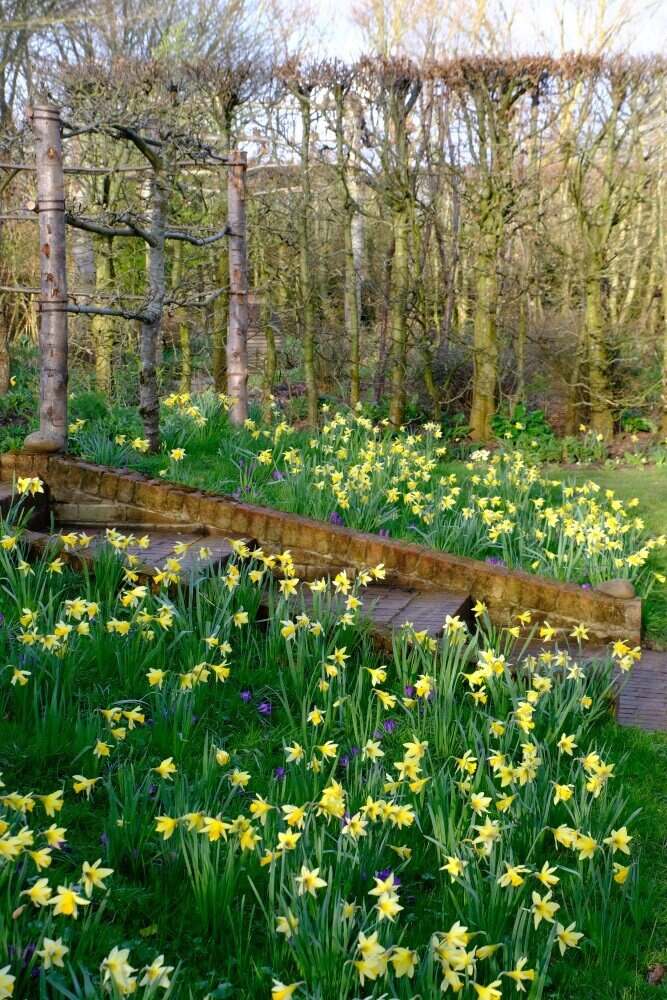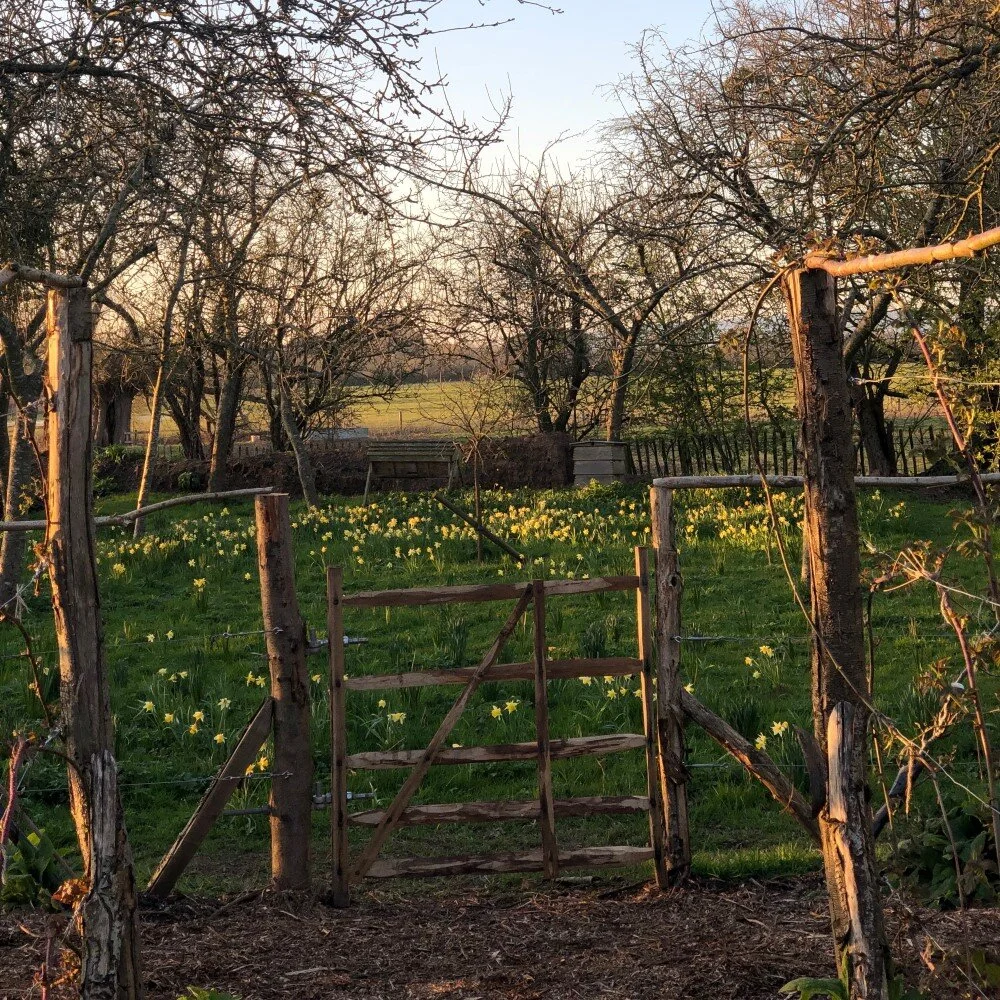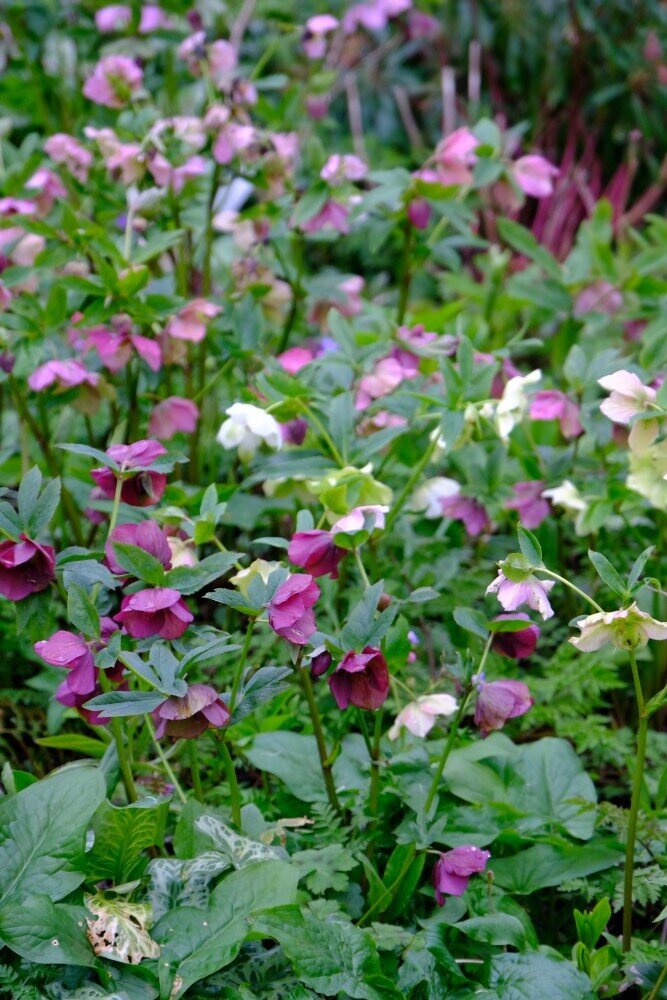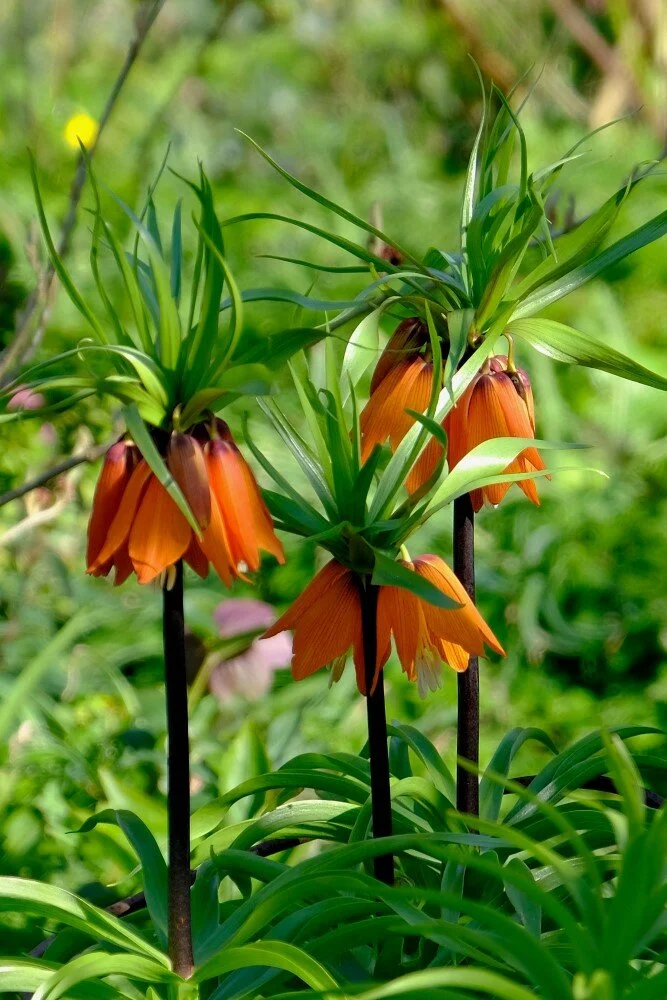March 2021
March is always an exciting month. The weather here in this garden is maverick and completely unpredictable - the chances are high that it will be cold, wet, snowy, frosty, stormy, sunny and balmy - and often all on the same day. Despite this, March is the month when the garden really comes alive after winter. Whatever the weather does, Spring cannot be denied. March birdsong is the best of the year and the bulbs, from the latest snowdrops to the earliest tulips and a dozen species in between, are all bursting into flower.
It has to be exceptionally mild here at Longmeadow for the ground to warm up but the sun can and does shine and this is the month when bulbs really take charge, growing and flowering regardless of the weather, adding an array and intensity of colour that sweeps winter away.
The days are getting longer - the clocks change at the end of the month - and March, of all the months of the gardener’s year, is the one where time presses most urgently, finishing the winter jobs, sowing, planting, getting that feel of soil on your hands and just a little sun on your back.
Above all March is the month where gardener and garden become easy in their reacquaintance after the wary stand-off of the winter months. Just as the hedges start to prickle with fresh green leaves and the last of the snowdrops are replaced with a great flush of daffodils, crocus, hellebores and even the first species tulips, so I feel myself falling in love with my garden again.
What to do in the garden this month:
WILDLIFE IN THE GARDEN
KEEP FEEDING BIRDS. Most birds are nesting this month and many will start laying too. So this a time that puts great demands on their energy when there is not much natural food around so keep feeding the birds all month concentrating on high energy items such as fat, peanuts and sunflower seeds.
DO NOT DISTURB frogspawn. Frogs like to spawn in shallow, still water, so if you are lucky enough to have some in your pond (and occasionally even in a puddle) then leave it well alone and do not be tempted to clear the pond or plant anything. Wait until the middle of next month when the tadpoles will all have hatched.
Many creatures such as hedgehogs, bats, dormice, grass snakes, toads, newts and many butterflies will be starting to come out of hibernation or a state of torpor. Try not to disturb natural hibernation spots, especially if you are vigorously tidying up after a long winter. These creatures all make a slow start and will be lethargic and weak - be mindful of them.
Any herbaceous plant can be divided this month. Dig the whole plant up and discard the centre section to the compost heap, replanting the more vigorous outside parts of the plants in groups which will grow together to make one large plant. It is worth doing this to all herbaceous perennials every three to five years.
If your soil is ready then March is a good time to plant and move things around. But ‘ready’ means, above all, warm enough. The only way to know this is by touch. Pick up a handful of earth. If it feels cold and clammy to the skin then seeds will not germinate and roots will not grow. If it feels warm, holds together when squeezed and yet can easily be crumbled then it is ideal.
LAWNS
To get a ‘good’ lawn you have to think positively. Put your efforts into healthy grass rather than fighting perceived ‘problems’ like daisies, moss, ants, worm-casts, moles, plantains, dandelions and fairy rings. Nine times out of ten if the grass is healthy then everything else will look after itself.
The best grass likes very well drained soil. Moss, for example, is always a symptom of poor drainage, made worse by shade. Unfortunately even the best prepared soil becomes compacted by matted roots, rain and, especially, normal family use. The answer is to work on it at least once a year by sticking a fork in the ground and wiggling it about and repeating the process every 6 inches or so.
Then mix up equal portions of sieved topsoil, sharp sand and sieved leaf mould or compost. If you do not have these things to hand then just sharp or silver sand will do the job. Spread it across the area you have pricked and brush it in with a stiff broom, filling the holes with the mixture. This will help drainage and feed the grass.
It is also worth giving the lawn a good scratch with a wire rake. This will get at all the overwintering thatch and moss, and let light and water get to the soil and to the roots of the grass. Put the debris on the compost and then mow.
The grass will need mowing in March but do not cut it too short. Just give it a light trim for the rest of this month and the grass will be a lot healthier – and better able to resist summer drought – as a result.
Do NOT cut back, tie or tidy the leaves of any bulbs but let them die back naturally as next year’s flower is being created by the photosynthesis of the foliage. Leave them until the last trace of green has gone - which will be at least June - and then tidy them or cut back.
The first half of March is the best time to prune any shrubs and climbers that will flower on new growth and in particular late flowering clematis, roses and buddleia and caryopteris. I like to do this when I start to see new shoots appearing but resist the temptation to do so if there is a mild February as the subsequent regrowth can be nipped back by a late frost.
Shrubs such as Cornus, Willow and Sambucus can also be cut back hard to encourage fresh shoots whose bark will glow with extra bright colour next winter. I know that pruning can be the cause of some anxiety but there is only one rule to follow which is always cut back to something, be it a side shoot or leaf bud. Other than that do not worry unduly about outward facing buds or any such finessing. Cut with abandon or, don’t cut at all. Either way the plant will almost certainly be fine.
The reason for pruning is to encourage vigorous new growth that will in turn produce lots of flowers and, in climbers such as the viticella group clematis, to stop the flowers being produced ever higher and higher up the plant with correspondingly bare lower portion.
Deciduous grasses like miscanthus, calamagrostis and deschampsia should all be cut back hard to the ground before the new green shoots start to grow too long. Evergreen grasses like the Stipa and cortaderia families should not be cut back. However comb through each plant with a rake or your hands (I advise wearing stout gloves as grasses can be very sharp) pulling out all dead growth. The old dead growth can be shredded and composted.
When you have finished clearing and cutting back give the grasses a thick mulch with a low-fertility material – i.e. not garden compost or manure. I use a pine bark mulch. However, do not divide or move any grasses at this time of year. They must be growing strongly to have the best chance of surviving so wait until late May or even early June.
Although March is often too early to plant out tender young seedlings it is a very good time to plant woody shrubs so that the roots can start to grow before the demands of new foliage become too stressful and this is especially true of any bare-root plants.
Because these are plants that will hopefully remain in the garden for years to come it is worth taking some trouble with their planting. Make sure that every scrap of perennial weeds are removed and dig a wide but shallow hole about 9 inches deep. Loosen the subsoil but do not add any compost or soil improver. I like to dust miccorhizae over the roots to help establishment and plant slightly proud of the soil level but firming the roots well to form a slight cone. Water generously before mulching thickly with good compost.
ALLOTMENT / VEG GARDEN
Sow seeds under cover such as cabbage, lettuce, celery, beetroot and tomatoes. Do not sow any seeds outside if the ground feels cold to touch. If warm and dry enough, sow broad beans, beetroot, rocket, spinach, mizuna, parsnips, radish and winter lettuce.
Chit potatoes and plant out at the end of the month if the ground is dry enough.
Plant out onion and shallot sets. Cover them with fleece for the first couple of weeks to stop birds pulling them from the ground.
Dig in overwintering green manure.
Dig any unprepared ground and/or make raised beds by the end of the month.
Prune Gooseberries and red and white currants.




















